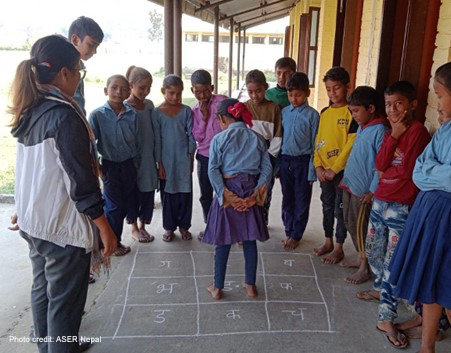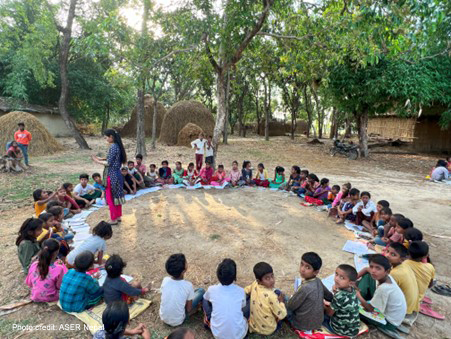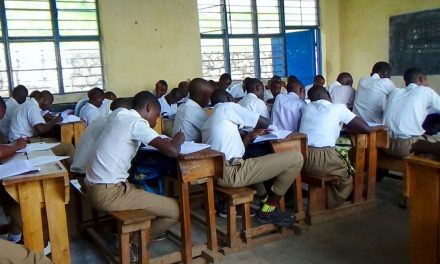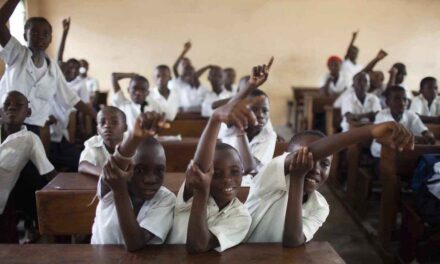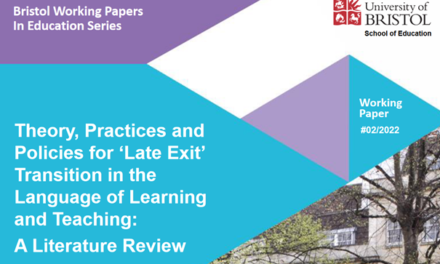This blog was written by Rajib Timalsina, Assistant Professor of Conflict, Peace and Development Studies at Tribhuvan University, Director of ASER Nepal, and Advisory Board Member at People’s Action for Learning (PAL) Network. For the 2023 UKFIET conference, 28 individuals, including Rajib, were provided with bursaries to assist them to participate and present at the conference. The researchers were asked to write a short piece about their research or experience.
Gender-based violence and intersectional discrimination of girls and female youth are common challenges in Nepal (Hickey and Stratton, 2007). Youth, in general, are often targeted and perceived as instigators during conflicts due to their involvement in Nepal’s civil war, and thus, their roles as peacebuilders are largely unrecognised (Pherali, 2011; Search for Common Ground, 2011). To date, children and young people have not been given meaningful opportunities to take part in decision-making processes that affect their everyday lives. In most of the cases, the structural and social aspects have kept females and children in marginalised communities from accessing the educational institutions, and even when these children are in schools, their foundational literacy is very low (Annual Status of Education Report Nepal, 2019). In a village in southern Nepal, we found 402 children of 5-16 years of age, with only 2 being able to recognise letters and another 400 could not even recognise the alphabet and numbers (My Village Baseline Assessment, forthcoming[i]).
The importance of foundational literacy cannot be overstated, as it is essential for the future success of students. Across the world, large proportions of children are not acquiring foundational reading and numeracy skills, even after spending several years in school (UNESCO, 2015). The research related to this global problem of ‘learning poverty’ has shown that children who cannot read and understand a simple text are more likely to struggle in school, repeat grades, and drop out (World Bank, 2019). Furthermore, students need to master certain foundational skills before they can reach more advanced skills, and without these skills, they may not be motivated to learn (Snow et al., 1998). In Nepal, the Education Review Office (2022) and Ministry of Education, Nepal (2014) has stated that the foundational learning of public-school students is very weak. Addressing the gaps in foundational literacy among diverse groups, such as geography, caste/ethnicity, gender and socio-economic status, is crucial (Rodriguez-Segura, Crouch, Slade, & Campton, 2021).
Fundamentally, all agree that we have to address “learning poverty” for all, and even more specifically for children from marginal and diverse groups, to ensure social justice. Traditional teaching and learning have shown a lot of discrepancies in ensuring equity in learning. The power-over and discipline-centric pedagogy requires a shift towards learning-centric power-with pedagogy. I found the arts-based methods such as games, theatre, music, painting, imagination and poetry are very powerful approaches. Arts-based methods have been widely used in post-conflict contexts to address the psychological, social and political effects of violence and trauma. However, there is a lack of systematic and rigorous research on how arts-based methods contribute to social justice in educational settings. My presentation at the UKFIET 2023 conference focused on two research questions: (1) How do arts-based methods enable young schoolgirls to voice their experiences, needs, and aspirations? (2) How do arts-based methods influence individual and collective attitudes, behaviours, and actions towards social justice in the educational institutions in Nepal?
To answer these questions, we adopted a participatory action research design as part of My Village learning intervention project in Nepal. 281 volunteers were trained in how to conduct baseline assessments as well as how to run arts-based accelerated learning camps in 121 total villages in 3 districts: Sarlahi, Makwanpur and Surkhet. 70% of volunteer teachers were young females (17-19 years old) and this was their first job in life. Almost all of them are first generation school-goers and now helping to ensure all children learn in their own villages. During this project cycle, we reached 3 districts, 121 villages, 11,191 households, 17,069 children (5-16 years) where the ration of girls and boys was 6:4. A total of 11,979 out of 17,069 children attended our accelerated learning camps in our target villages, which made 70.13%.
The My Village project has multiple aspects and integrated interventions, such as community libraries, SMS support to children through parents, life-skills sessions for adolescents, and accelerated remedial learning camps. In this writing, I am only focusing on the arts-based activities which were used as part of accelerated camps by our volunteer teachers alongside many other activities. As part of the My Village project, our volunteer teachers first compiled diverse arts-based games, trust building activities, theatrical skills, some painting exercises to enhance numeracy skills, storytelling and role plays methods etc. The activities and games were divided into various levels:
- Level-0 games for beginners to help recognising letters and numbers.
- Level-1 games for letter level children to learn words and single digit numeric operations.
- Level-2 games for word level children to learn sentences and addition/subtractions.
- Level-3 for supporting story reading and basic arithmetic operations of Grade-2 levels.
Our volunteers reported “art and artistic practices excited the imagination and allowed learners to put themselves in any situation of their choosing”. Art-based methods can be used in a literacy related/story telling class to imagine students in social contexts as well such as legislators making laws, or in the science classroom to make students imagine they are scientists working on ecological challenges that are essential to address for the future of the human race. A little bit of imagination enriches learning. And a little bit of art can trigger a lot of imagination.
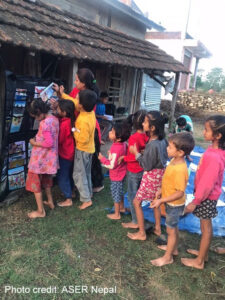 A quick response to our first research question, “How do arts-based methods enable young schoolgirls to voice their experiences, needs, and aspirations?”. Almost 70% of volunteer teachers are young girls. In most cases these girls were from marginalised communities (so-called ‘untouchables’ and Madhesi communities) living in rural areas. Almost all of our volunteer teachers were from high-school (Grade 11-12) level from local community schools. We found that most of our volunteer teachers at My Village project themselves were the first generation who went to school and this volunteering job itself was their first job. These points are already powerful on their own with regards to social justice aspect. More than that, despite the traditional teaching-learning practices where young girls are recipients of knowledge in most cases and old male teachers were lecturing them, in this project, they are active leads to collect local arts-based games, leading the classes, sharing the findings with the local community, and playing together with children in learning camps, which ensured the learning of children who were falling behind.
A quick response to our first research question, “How do arts-based methods enable young schoolgirls to voice their experiences, needs, and aspirations?”. Almost 70% of volunteer teachers are young girls. In most cases these girls were from marginalised communities (so-called ‘untouchables’ and Madhesi communities) living in rural areas. Almost all of our volunteer teachers were from high-school (Grade 11-12) level from local community schools. We found that most of our volunteer teachers at My Village project themselves were the first generation who went to school and this volunteering job itself was their first job. These points are already powerful on their own with regards to social justice aspect. More than that, despite the traditional teaching-learning practices where young girls are recipients of knowledge in most cases and old male teachers were lecturing them, in this project, they are active leads to collect local arts-based games, leading the classes, sharing the findings with the local community, and playing together with children in learning camps, which ensured the learning of children who were falling behind.
For many youth, engagement in “My Village” learning camps as teachers is a space for inclusion, empowerment and transformation, by engaging participants as active agents of change in their society. With regards to the second research question, “How do arts-based methods influence individual and collective attitudes, behaviours, and actions towards social justice in the educational institutions in Nepal?”, we realised challenges and limitations of arts-based methods in addressing structural and systemic causes of injustice. We saw in our learning camps, when the youths were facilitating sessions as a co-learning model with arts-based activities, the power-dynamics in education shifted. In a typical classroom, a teacher has the burden of “must-know”, shifted to facilitating co-learning and exploring together with children. The burden of school teachers only to ensure children learn in rural areas was also shifted to local youth who showed examples that the teenage youth can also facilitate learnings if the opportunities are created accordingly. Some teachers/local elected representatives/parents started saying “Oh, learning can happen through games/play as well.” Their mentality about the arts as extra-curricular activities was shifted towards “arts-based activities as co-curricular activities”.
Another interesting example was that community members have seen many times, outsiders or experts come, do field work and go away. They did not know where and how they use the data. In My Village project, “Local youths themselves assessed children using simple ASER Nepal tools to know the different levels (beginners, letter, word, sentence or story), prepare reports in simple handwritten charts in local languages and share to the community”. The reports were in local languages which gave more access for low-literate community stakeholders. Community members are seeing “Local youth are being skilled and prepared for further careers, younger children are learning, and at the same time many parents realised games and arts are not only for fun, these can also supplement learning”.
In conclusion, the evidence from the field notes revealed that arts-based methods created spaces for inclusion, empowerment, and transformation by engaging local youth and children together in co-creation and co-learning spaces. The My Village project demonstrated that youth from the community can be leaders and active agents of change to address “learning poverty” in their own village. However, the findings also highlight the challenges and limitations of arts-based methods in addressing the structural and systemic causes of injustice and conflict. The study offers practical implications for practitioners who want to use arts-based methods effectively and ethically for social justice and peacebuilding purposes.
[i] My Village Baseline Assessment (forthcoming). Conducted by ASER Nepal with the support from People’s Action for Learning Network (Kenya).

